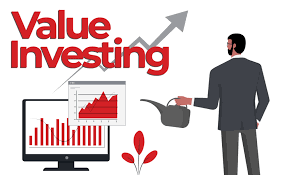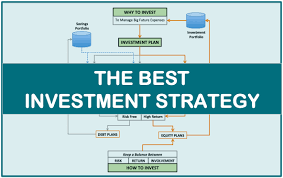While the digital economy has transformed many traditional business models, the fundamental principles of value investing continue to offer powerful tools for identifying undervalued opportunities.
This comprehensive guide explores how classic value investing strategies can be adapted and applied to modern markets, helping both novice and experienced investors navigate the complexities of today’s investment landscape.
Skale Money Key Takeaways
Before diving deep into specific strategies, here are the essential points you’ll learn:
- Traditional value investing principles still work but require modern adaptation
- Successful value investing combines quantitative and qualitative analysis
- Risk management is crucial in the digital economy
- Time commitment: Expect to spend 5-10 hours per week on research and analysis
- Learning curve: 6-12 months to develop proficiency in these strategies
Table of Contents
Understanding Value Investing Fundamentals
Value investing strategies have stood the test of time since Benjamin Graham first introduced them in the 1930s. At its core, value investing seeks to identify and invest in securities trading below their intrinsic value, providing a margin of safety for investors.
Key concepts that form the foundation of value investing include:
- Intrinsic value: The actual worth of a company based on fundamentals
- Market inefficiency: Prices don’t always reflect true value
- Margin of safety: Buying at a significant discount to protect against errors
- Long-term perspective: Focus on multi-year holding periods
- Fundamental analysis: Deep dive into company financials and operations
Strategy 1: Traditional Financial Ratio Analysis
Financial ratios provide a quantitative framework for identifying potentially undervalued stocks. These metrics help investors compare companies across industries and time periods.
Essential ratios every value investor should analyze:
- P/E ratio: Compare against industry averages and historical trends
- P/B ratio: Particularly useful for asset-heavy businesses
- Debt-to-Equity: Assess financial health and risk
- Free Cash Flow yield: Measure real cash generation ability
| Industry Type | Ideal P/E Ratio | Target P/B Ratio | Maximum D/E Ratio |
| Technology | < 25 | < 5 | < 0.5 |
| Manufacturing | < 20 | < 3 | < 1.0 |
| Utilities | < 15 | < 2 | < 1.5 |
| Financial | < 12 | < 1.5 | < 3.0 |
Strategy 2: Discounted Cash Flow (DCF) Analysis
DCF analysis remains one of the most powerful value investing strategies for determining a company’s intrinsic value. This method estimates future cash flows and discounts them to present value.
Key components of a DCF analysis:
- Project future cash flows (5-10 years)
- Determine appropriate growth rates
- Calculate the weighted average cost of capital (WACC)
- Estimate terminal value
- Apply margin of safety (typically 20-30%)
Strategy 3: Quality Metrics Screening
In the digital economy, quality metrics have become increasingly important for value investing strategies. These indicators help identify companies with sustainable competitive advantages.
Essential quality metrics include:
- ROE > 15% consistently over 5 years
- Operating margins trending upward or stable
- Revenue growth exceeding industry average
- Strong market share in core segments
| Quality Metric | Excellent | Good | Average | Poor |
| ROE | >20% | 15-20% | 10-15% | <10% |
| Operating Margin | >25% | 15-25% | 10-15% | <10% |
| Revenue Growth | >15% | 10-15% | 5-10% | <5% |
| Market Share Rank | #1 or #2 | Top 5 | Top 10 | Others |
Strategy 4: Digital Economy Adaptations
Modern value investing strategies must account for the unique characteristics of digital businesses. Traditional metrics often fail to capture the full value of digital assets and network effects.
Digital-age considerations include:
- Intangible asset valuation (patents, data, algorithms)
- Network effect strength and scalability
- Platform economics and user engagement metrics
- Subscription revenue stability and growth
- Customer acquisition costs versus lifetime value
Strategy 5: Competition Moat Analysis
Identifying sustainable competitive advantages is crucial for value investing strategies in the digital age. A strong moat protects companies from competition and maintains profitability.
Key moat indicators to assess:
- Brand value and recognition
- Intellectual property portfolio
- Network effects and user base
- Switching costs for customers
- Data advantages and analytics capabilities
- Regulatory barriers to entry
Strategy 6: Industry Lifecycle Assessment
Understanding where an industry sits in its lifecycle helps value investors identify opportunities and avoid value traps.
Assessment framework:
- Growth phase identification (emerging, growth, mature, declining)
- Disruption potential from new technologies
- Regulatory environment and changes
- Market size and penetration rates
- Competitive dynamics and concentration
| Lifecycle Stage | Growth Rate | Competition | Capital Needs | Risk Level |
| Emerging | High | Low | High | High |
| Growth | Moderate | Increasing | Moderate | Moderate |
| Mature | Low | High | Low | Low |
| Declining | Negative | Decreasing | Minimal | High |
Strategy 7: ESG Integration in Value Investing
Modern value investing strategies increasingly incorporate Environmental, Social, and Governance (ESG) factors. Companies with strong ESG profiles often demonstrate better risk management and long-term sustainability.
Key ESG assessment areas:
- Environmental impact and carbon footprint
- Labor practices and community relations
- Board composition and executive compensation
- Supply chain sustainability
- Corporate transparency and reporting quality
- Regulatory compliance history
Strategy 8: Global Macro Considerations
Value investing strategies must account for macroeconomic factors that can impact company valuations and performance.
Critical macro factors to monitor:
- Interest rate trends and monetary policy
- Currency exchange rate impacts
- Global trade dynamics
- Supply chain resilience
- Political and regulatory risks
- Demographic trends
Building Your Value Investment Process
Successful value investing strategies require a systematic, repeatable process. This framework helps remove emotion from investment decisions and ensures consistency.
Essential process elements:
- Initial screening criteria
- Detailed analysis checklist
- Investment thesis template
- Position sizing rules
- Regular review schedule
| Process Step | Key Activities | Time Investment | Review Frequency |
| Screening | Ratio analysis | 2-3 hours/week | Weekly |
| Due Diligence | Deep research | 5-8 hours/stock | As needed |
| Monitoring | Performance tracking | 1-2 hours/week | Monthly |
| Rebalancing | Portfolio adjustment | 2-3 hours | Quarterly |
Risk Management Strategies
Effective risk management is crucial for long-term success in value investing. A well-structured approach helps protect capital while pursuing returns.
Risk control guidelines:
- Maximum position size: 5-10% of portfolio
- Industry exposure limit: 20-25% per sector
- Geographic diversification targets
- Regular rebalancing schedule
- Stop-loss considerations (optional)
- Cash position management (typically 5-15%)
Tools and Resources
Modern value investing strategies benefit from various tools and resources that enhance analysis and decision-making.
Recommended resources:
- Financial screening platforms (Finviz, Yahoo Finance)
- Analysis software (Bloomberg, FactSet)
- Research databases (EDGAR, S&P Capital IQ)
- Value investing books and courses
- Industry-specific publications
| Tool Category | Free Options | Paid Options | Best For |
| Screening | Finviz | Bloomberg | Initial research |
| Analysis | Yahoo Finance | FactSet | Deep analysis |
| News/Research | EDGAR | S&P Capital IQ | Due diligence |
| Portfolio Tracking | Google Finance | Morningstar | Monitoring |
Conclusion
Value investing strategies remain powerful tools for building wealth in the digital economy, but success requires adapting traditional approaches to modern market conditions.
The key to successful value investing lies in:
- Combining quantitative and qualitative analysis
- Maintaining discipline in process and execution
- Understanding both traditional and digital business models
- Practicing proper risk management
- Continuous learning and adaptation
Remember that value investing is a journey, not a destination. Start with these proven strategies, but be prepared to adapt and evolve your approach as markets change and your experience grows.
FAQ Section
How much capital do I need to start value investing?
- Minimum recommended: $5,000-$10,000
- Ideal starting range: $25,000-$50,000
- Focus on learning with smaller amounts initially
How long should I hold value investments?
- Typical holding period: 3-5 years minimum
- May extend to 10+ years for high-quality companies
- Depends on company performance and valuation changes
Can value investing work in high-growth sectors?
- Yes, but requires modified metrics and analysis
- Focus on unit economics and scalability
- Consider competitive advantages and moat sustainability
What are the biggest mistakes to avoid?
- Buying solely based on low ratios
- Ignoring industry disruption risks
- Insufficient diversification
- Emotional decision-making
- Neglecting regular portfolio review
How many stocks should be in a value portfolio?
- Minimum: 15-20 stocks
- Optimal range: 25-35 stocks
- Maximum: 40-50 stocks
- Consider position sizing based on conviction
How often should I review my value investments?
- Company fundamentals: Quarterly
- Portfolio rebalancing: Semi-annually
- Investment thesis: Annually
- News and developments: Ongoing
![]()




